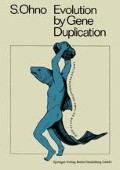Abstract
In bacteria and certain other unicellular organisms, the entire genetic material exists in the form of a DNA ring. Such organisms are typically haploids and within the cell there exists no sharp demarcation between the nucleus and the cytoplasm. These organisms are called prokaryotes.
Access this chapter
Tax calculation will be finalised at checkout
Purchases are for personal use only
Preview
Unable to display preview. Download preview PDF.
References
Allfrey, V.G., Litau, V. G, Mirsky, A.E.: On the role of histories in regulating RNA synthesis in the cell nucleus. Proc. Natl. Acad. Sci. US 49, 414–421 (1963).
Barr, M.L., Bertram, L.F.: A morphological distinction between neurones of the male and female and the behavior of the nucleolar satellite during accelerated nucleoprotein synthesis. Nature 163, 676–677 (1949).
Beutler, E., Yeh, M., Fairbanks, V.F.: The normal human female as a mosaic of X chromosome activity: Studies using the gene for G-6-PD deficiency as a marker. Proc. Natl. Acad. Sci. US 48, 9–16 (1962).
Britten, R.J., Kohne, D.E.: Repeated sequences in DNA. Science 161, 529–540 (1968).
Bustin, M., Rall, S. C, Stellwagen, R.H., Cole, R.D.: Histone structure: Asymmetric distribution of lysine residues in lysine-rich histone. Science 163, 391–393 (1969).
Darlington, C.D.: Recent advances in cytology. London: J. and A. Churchill, Ltd. 1935.
Dearing, W.H., Jr.: The material continuity and individuality of the somatic chromosomes of Ambystonta tigrinum, with special reference to the nucleolus as a chromosomal component. J. Morphol. 56, 157–179 (1934).
Ferguson-Smith, M.A., Handmaker, S.D.: Observations on the satellited human chromosomes. Lancet 1961 I, 638–640.
Heitz, E.: Die somatische Heteropyknose bei Drosophila melanogaster und ihre genetische Bedeutung. 2. Zellforsch. Abt. Histochem. 20, 237–287 (1933).
Hnilica, L.S.: Studies on nuclear proteins. I. Observations on the tissue and species specificity of the moderately lysine-rich histone fraction 2b. Biochim. et Biophys. Acta 117, 163–175 (1966).
Huang, R.C., Bonner, J.: Histone, a suppressor of chromosomal RNA synthesis. Proc. Natl. Acad. Sci. US 48, 1216–1222 (1962).
Johns, E.W.: Metabolism and radiosensitivity. In: The cell nucleus, p. 116. London: Taylor and Francis, Ltd. 1966.
Kaufmann, B.P.: Somatic mitoses of Drosophila melanogaster. J. Morphol. 56, 125–156 (1934).
Lyon, M.F.: Gene action in the X-chromosome of the mouse (Mus musculus L,.). Nature 190, 372–373 (1961).
Miller, O.L., Jr., Beatty, B.R.: Visualization of nucleolar genes. Science 164, 955–957 (1969).
Muller, H.J.: Further studies on the nature and causes of gene mutations. Proc. Vlth Int’ 1 Congr. Genet. Ithaca, N.Y., 1, 213–255 (1932).
Neelin, J.M., Callahan, P.X., Lamb, D. C, Murray, K.: The histones of chicken erythrocyte nuclei. Can. J. Biochem. and Physiol. 42, 1743–1752 (1964).
Ohno, S., Kaplan, W.D., Kinosita, R.: Formation of the sex chromatin by a single X-chromosome in liver cells of Rattus norvegicus. Exptl. Cell Research 18, 415–418 (1959).
—, Trujillo, J.M., Kaplan, W.D., Kinosita, R.: Nucleolus-organizers in the causation of chromosomal anomalies in man. Lancet 1961 II, 123–125.
— Klinger, H.P., Atkin, N.B.: Human oögenesis. Cytogenetics 1, 42–51 (1962).
Stedman, E., Stedman, E.: Cell specificity of histones. Nature 166, 780–781 (1950).
Taylor, J.H.: Asynchronous duplication of chromosomes in cultured cells of Chinese hamsters. J. Biophys. Biochem. Cytol. 7, 455–464 (1960).
Tjio, J.H., Levan, A.: The chromosome number of man. Hereditas 42, 1–6 (1956).
Yasmineh, W.D., Yunis, J.J.: Satellite DNA in mouse autosomal heterochromatin. Biochem. Biophys. Res. Commun. 35, 779–782 (1969).
Author information
Authors and Affiliations
Rights and permissions
Copyright information
© 1970 Springer Science+Business Media New York
About this chapter
Cite this chapter
Ohno, S. (1970). Chromosomes of Eukaryotes. In: Evolution by Gene Duplication. Springer, Berlin, Heidelberg. https://doi.org/10.1007/978-3-642-86659-3_4
Download citation
DOI: https://doi.org/10.1007/978-3-642-86659-3_4
Publisher Name: Springer, Berlin, Heidelberg
Print ISBN: 978-3-642-86661-6
Online ISBN: 978-3-642-86659-3
eBook Packages: Springer Book Archive

